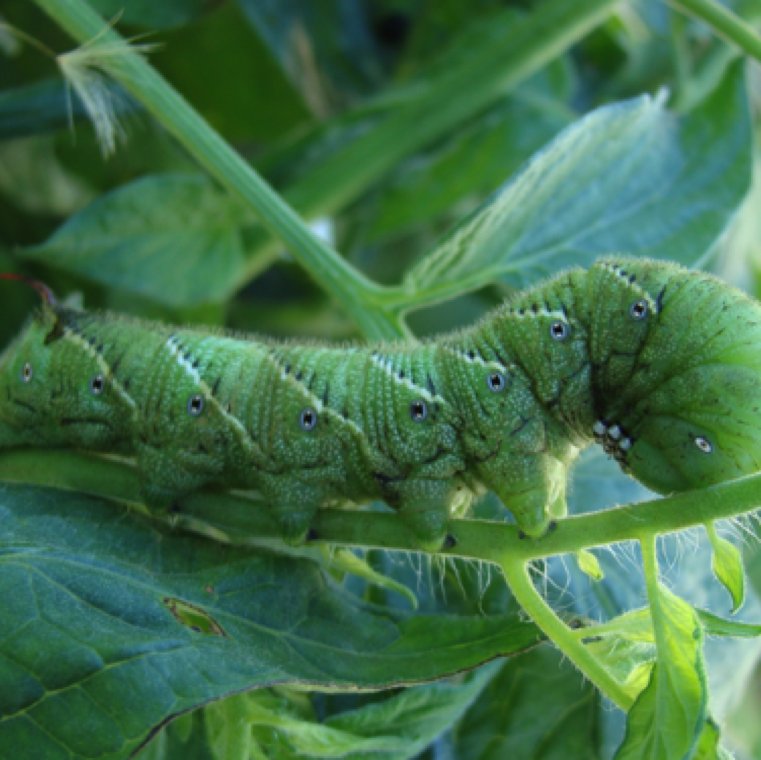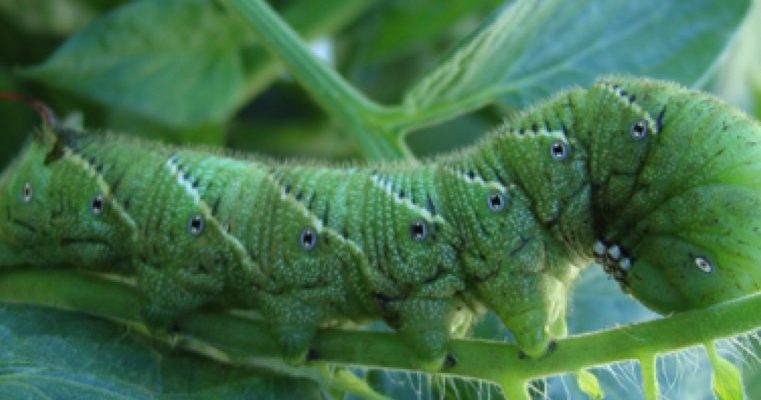
What Are Hornworms?
Hornworms are a gardener’s worst nightmare, but they’re also intriguing creatures. Typically, you’ll recognize them for their bright green color and the distinct horn protruding from their rear end—hence the name! These little guys can grow up to 4 inches long and can devour leaves faster than you can say “plants for pests.” They primarily feed on plants in the nightshade family, like tomatoes and peppers.
Here’s the thing: they can blend in remarkably well with the foliage. This camouflage makes spotting them a challenge. You could be looking right at one without realizing it. If you notice your plants losing leaves or appearing munched, look closer!
Also, hornworms come with a few friends—like the parasitic wasps that lay their eggs on them. When the eggs hatch, they’ll eat the hornworm from the inside. It’s a bit gruesome but very nature-esque!
Understanding Leaf Curling
Leaf curling can be a sign of various issues, ranging from environmental stress to pest infestations. When leaves curl, they might be trying to protect themselves from pests or conserve water. Imagine if you were wearing a tight sweater in the heat; you’d probably hunch up to feel cooler. Plants do something similar with leaf curling.
Temperature extremes, over or under-watering, and nutrient imbalances can all lead to this phenomenon. For example, if it’s been particularly dry, a plant might curl its leaves to minimize water loss. Alternatively, too much water can lead to root rot, stressing the plant and causing curling as well.
Additionally, pests, like aphids or whiteflies, can also contribute to leaf curling. They suck out the sap, leading to weakened and distorted leaves. So, when your plants start curling, it’s like they’re waving a red flag—”Help! Something’s not right!”
Are Hornworms Responsible For Leaf Curling?
Yes, hornworms can indeed be linked to leaf curling! When they munch on your plants, they cause significant damage that may lead to curling leaves. They’re like party crashers who leave a mess behind. As they chew through the foliage, the plant may respond by curling its leaves in an attempt to heal itself or protect against further damage.
In severe cases, hornworm damage can be so extensive that it stresses the plant, leading to even more pronounced curling. If many leaves are gone, the plant struggles to photosynthesize efficiently, which can exacerbate the curling. It’s like being short on lunch breaks at work—you’d be a bit cranky too!
Identifying Hornworm Damage
To know if hornworms are to blame for your leaf curling, you’ll want to look for specific signs:
- Munched Leaves: Look for large, irregular holes in the leaves.
- Droppings: Hornworms leave behind small, dark droppings. If you see these under your plants, it’s a good indication they’re around.
- Caterpillar Sightings: Spotting the actual hornworm can confirm your suspicions. They often hide on the underside of leaves.
When you notice these signs, it’s time to take action.
How To Manage Hornworms
If you’ve found hornworms causing chaos in your garden, don’t panic! There are a few effective ways to manage them without resorting to harsh chemicals.
First off, you can manually remove them. This method is labor-intensive but effective. Just check your plants regularly, especially the undersides of leaves. Use gloves if you’re squeamish!
Another option is introducing natural predators, like ladybugs or parasitic wasps. These beneficial insects will snack on the hornworms and help keep their population in check.
Lastly, if the infestation is severe, consider using organic pesticides. Products containing *Bacillus thuringiensis* (Bt) target caterpillars specifically, minimizing harm to beneficial insects. Always read the instructions and apply carefully—not just for your plants but for the environment too!
Preventing Leaf Curling
To keep both hornworms and leaf curling at bay, a proactive approach is best.
First, ensure your plants are well-watered, but not overwatered. Test the soil moisture to find a good balance. Healthy, hydrated plants are more resilient against pests and stress.
Second, keep an eye on your plants’ nutrient intake. A good fertilization routine can make your plants strong enough to withstand the munching.
Lastly, practice crop rotation. By changing where you plant specific crops each season, you can disrupt the life cycles of pests like hornworms. It’s like moving to a new part of town to shake off annoying neighbors!
So, is there a connection between hornworms and leaf curling? Absolutely! Hornworms can lead to significant damage that often results in curled leaves as the plants try to cope. However, understanding the signs of hornworm damage and acting quickly can help save your plants.
By staying vigilant and following some preventive strategies, you can protect your green companions from becoming a buffet for hungry caterpillars. Gardening is a journey of learning, and with every leaf that curls or caterpillar that munches, you become just a little more connected to the heartbeat of nature. Happy gardening!

